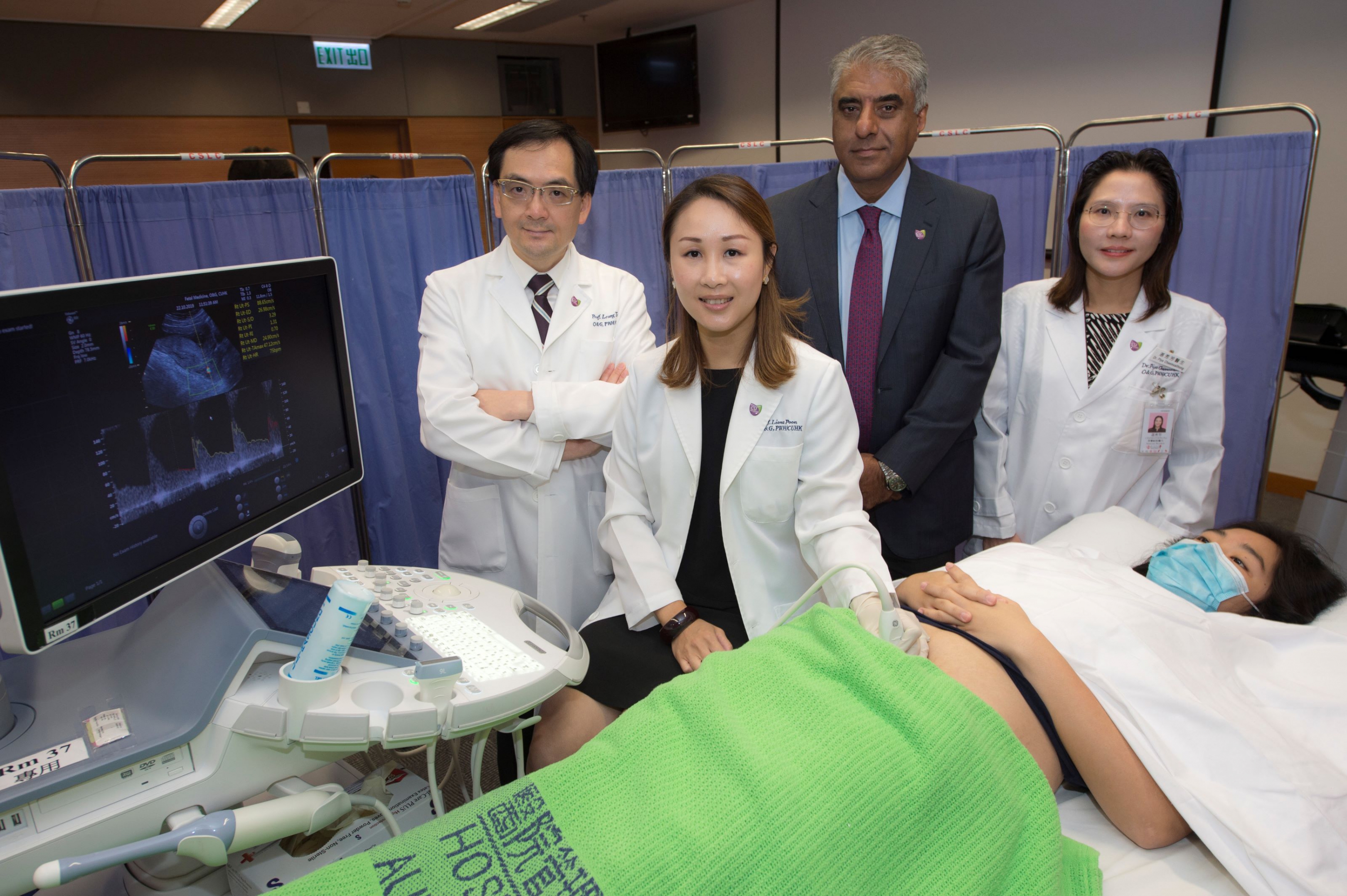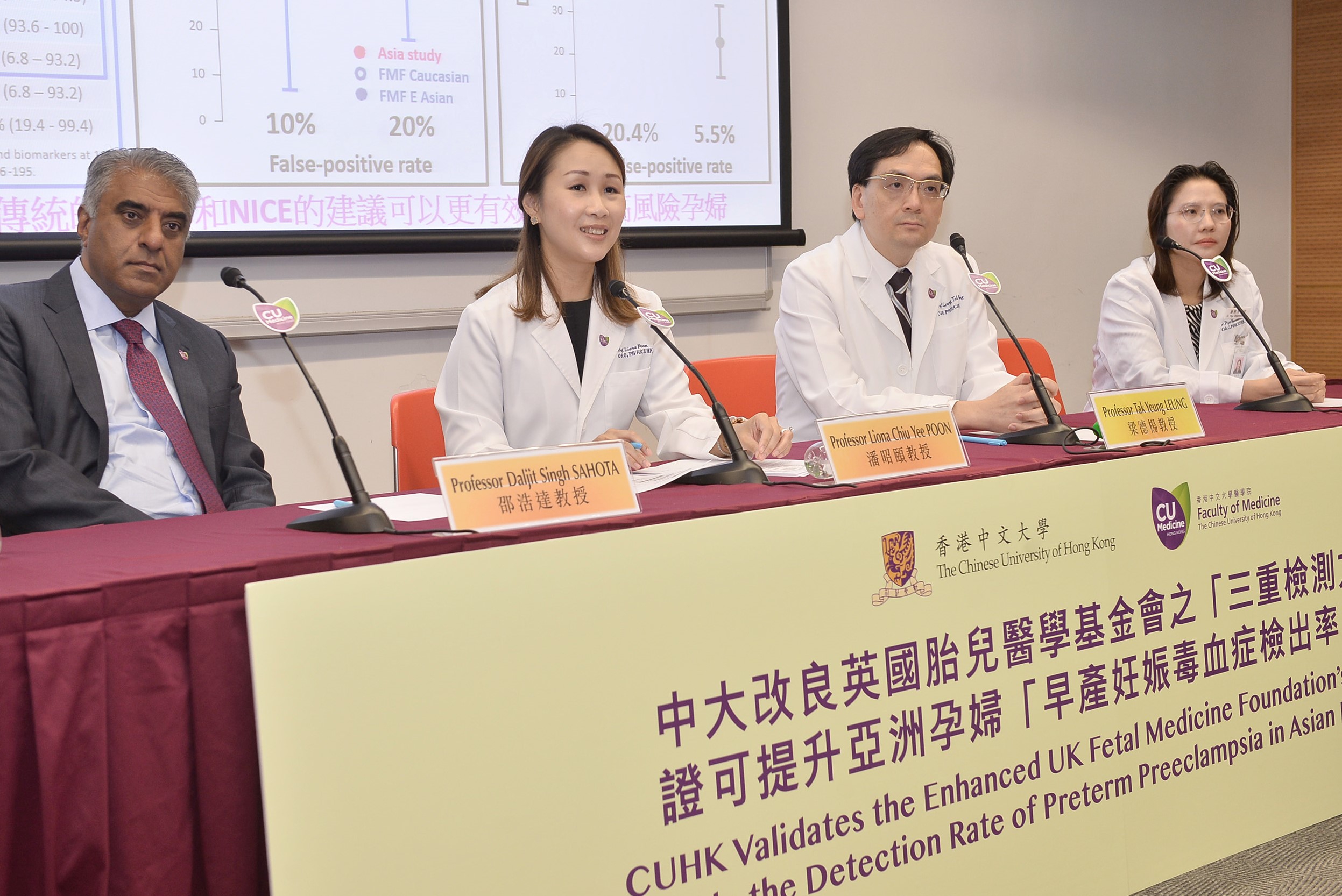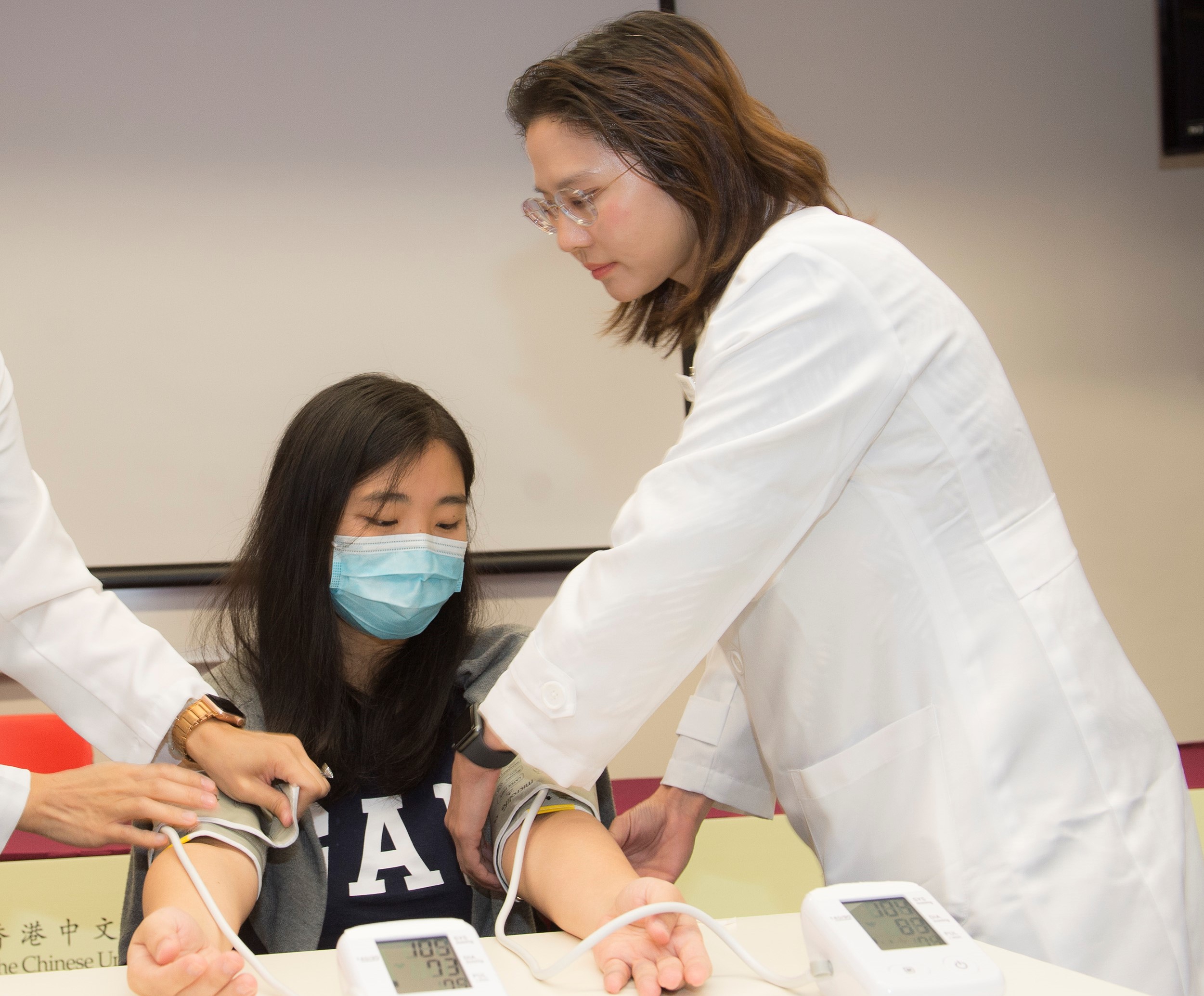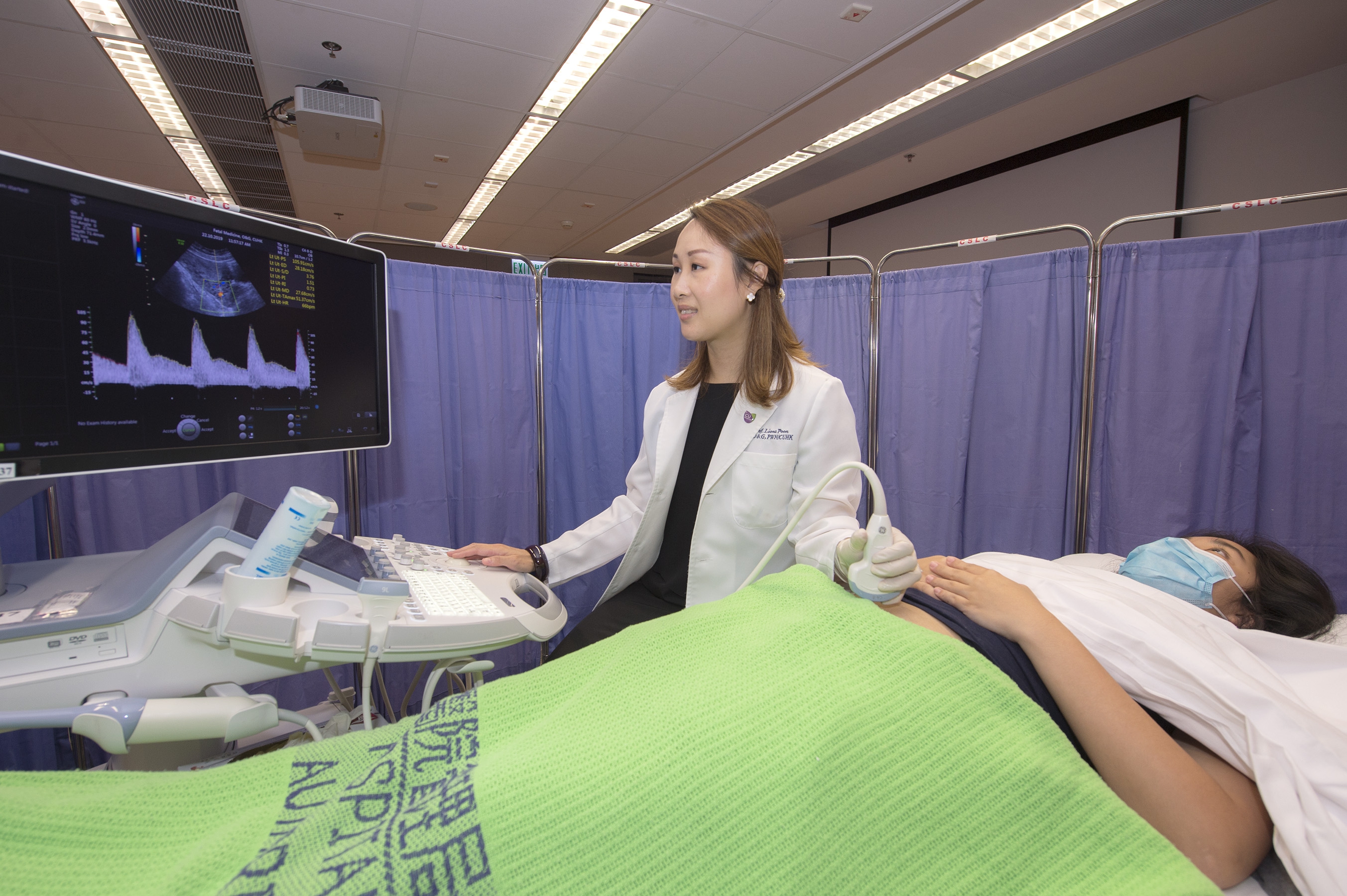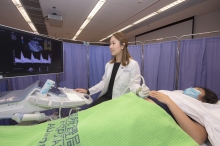CUHK
News Centre
CUHK Validates the Enhanced UK Fetal Medicine Foundation’s Triple TestCan Double the Detection Rate of Preterm Preeclampsia in Asian Pregnant women
A recent study conducted by the Department of Obstetrics and Gynaecology of the Faculty of Medicine at The Chinese University of Hong Kong (CUHK) has validated the use of the UK Fetal Medicine Foundation (FMF) triple test for the prediction of preterm preeclampsia at 11-13 weeks’ gestation in a large Asian population. The findings have been published in the international journal American Journal of Obstetrics & Gynecology.
It is found that FMF triple test offers preterm preeclampsia prediction with enhanced sensitivity and accuracy when compared to the current recommendations by the American College of Obstetricians and Gynecologists (ACOG) and the National Institute for Health and Care Excellence (NICE). Thus, the detection rate of preterm preeclampsia can be doubled.
Preeclampsia is found in over 2% of pregnancies worldwide
Preeclampsia affects approximately 2-8% of pregnant women worldwide, leading to many of the maternal and perinatal complications. The condition is traditionally diagnosed based on high blood pressure and presence of protein in urine after the 20th week of gestation. Some affected women develop very severe disease associated with kidneys, liver and also neurological problems, while the fetus may experience impaired growth or even premature birth. 76,000 women and 500,000 babies die each year from preeclampsia during pregnancy, making this disorder one of the leading causes of maternal and perinatal morbidity and mortality globally. Women who suffer from this disorder will also have higher incidence of cardiovascular diseases.
Professor Tak Yeung LEUNG, Chairman of the Department of Obstetrics and Gynaecology, Faculty of Medicine at CUHK explained, “This disorder is thought to be caused by poor function of the placenta, which leads to its inability to support the adequate blood supply required by the fetus, and poor uterine arterial vasodilatation, hence attributing to the common symptoms of preeclampsia.”
Evidence suggests that giving low-dose aspirin to women at high risk of the disorder can reduce the prevalence of the severest form of preeclampsia by more than 60%, but the aspirin prophylaxis must be given at the correct dosage and started before 16 weeks’ gestation. Therefore, early detection is important for the timely and effective preventive measures or treatment to be instigated.
New test offers screening with enhanced sensitivity and accuracy
The traditional approach for screening preeclampsia is to identify risk factors from maternal characteristics, obstetrics and medical history as defined by professional bodies such as ACOG and NICE. However, evidence suggests that the predictive performance based on maternal risk factors alone is limited.
The alternative approach for the screening of preeclampsia, namely the triple test, has been developed by the Fetal Medicine Foundation (FMF) and endorsed by the International Federation of Gynecology and Obstetrics (FIGO). This method is based on using the Bayes theorem to combine maternal factors with the measurements of mean arterial pressure, uterine artery pulsatility index (UtA-PI), and serum placental growth factor (PlGF) to assess individual risks of preterm preeclampsia, with delivery before 37 weeks of gestation. Pregnant women can be screened for preterm preeclampsia during the first trimester of pregnancy. Professor Liona Chiu Yee POON, Professor, the Department of Obstetrics and Gynaecology of the Faculty of Medicine at CUHK, was the lead researcher for the development of the FMF triple test in the United Kingdom. The test has been validated in several European and American countries such as Spain, Italy and the United States.
To validate the use of the FMF triple test for the screening of preterm preeclampsia among Asian population, Professor Poon and her team enhanced the triple test to increase its applicability to Asian pregnant women. They prospectively recruited a total of 10,935 singleton pregnancies from seven regions in Asia between 2016 and 2018. Participants’ risk of preterm preeclampsia was also detected according to ACOG and NICE recommendations, so comparing the sensitivity and accuracy of the three methods.
Fixing the false-positive rate at ~5%, according to the NICE recommendation, the FMF triple test achieves a significantly higher detection rate of 48.2%, compared to 26.3% of NICE. Similarly, fixing the false-positive rate at ~20%, according to the ACOG recommendation, the FMF triple test achieves a significantly higher detection rate of 75.8%, compared to 54.6% of ACOG. Thus, when compared to the traditional screening methods, the FMF triple test is found to be more accurate and sensitive in detecting preterm preeclampsia among Asian populations.
|
|
Detection Rate |
Detection Rate |
|
FMF triple test |
48.2% |
75.8% |
|
ACOG recommendation |
– |
54.6% |
|
NICE recommendation |
26.3% |
– |
FMF triple test uses existing infrastructure and technologies to easily predict preterm preeclampsia
Professor Liona POON stated, “The research has shown that the FMF triple test is, by far, superior to the ACOG and NICE recommendations for the detection of preeclampsia. The FMF triple test uses existing infrastructure and technologies to easily predict preterm preeclampsia, thus the technology can be quickly brought to service. The screening of preeclampsia using this method will allow early risk assessment and timely preventive measures including low dose aspirin prophylaxis.”
For more information about the FMF triple test, please browse: http://www.obg.cuhk.edu.hk/fetal-medicine/fetal-medicine_services/first-trimester-preeclampsia-screening/.
A recent study conducted by the Department of Obstetrics and Gynaecology of the Faculty of Medicine at CUHK has validated the UK Fetal Medicine Foundation’s Triple Test enhanced by the research team can double the detection rate of preterm preeclampsia in Asian pregnant women. (From left) Professor Tak Yeung LEUNG, Chairman; Professor Liona POON, Professor; Professor Daljit Singh SAHOTA, Associate Professor; and Dr. Piya CHAEMSAITHONG, Clinical Lecturer, of the Department of Obstetrics and Gynaecology of the Faculty of Medicine at CUHK.
A recent study conducted by the Department of Obstetrics and Gynaecology of the Faculty of Medicine at CUHK has validated the UK FMF Triple Test enhanced by the research team can double the detection rate of preterm preeclampsia in Asian pregnant women.
Dr. Piya CHAEMSAITHONG demonstrates how to measure a pregnant woman’s mean arterial pressure. This is one of the biomarkers for assessing individual risks of preterm preeclampsia via the FMF triple test.


